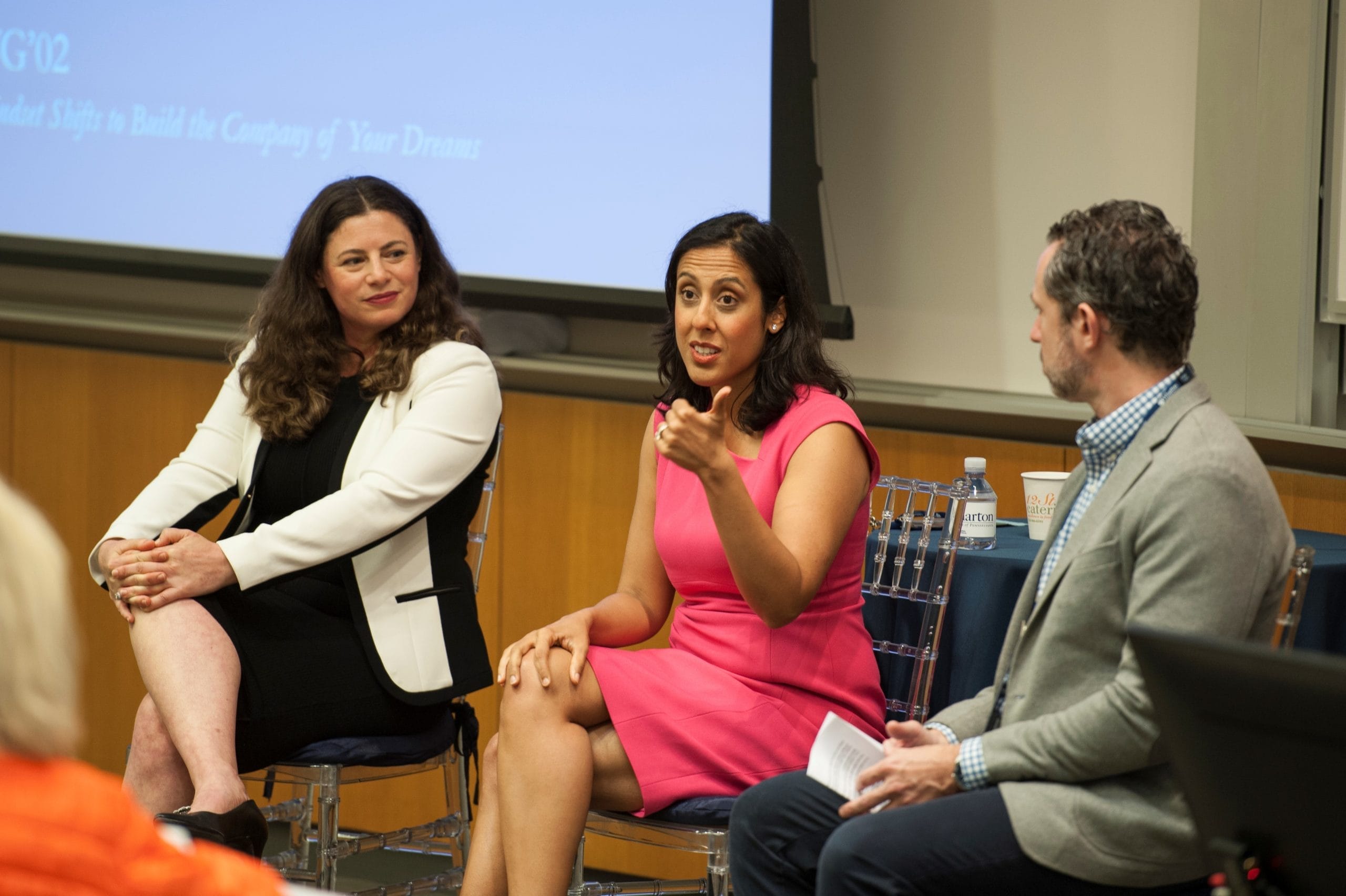When it comes to getting a book idea off the ground, the thought of putting pen to paper — or rather, fingers to keyboard — can be daunting. To help fellow alumni authors find success, Sandra Shpilberg WG02 and Erica Dhawan W07 shared key takeaways from their own writing and publishing experiences during Wharton Magazine’s Alumni Authors Salon at this year’s MBA Reunion Weekend.
The author of New Startup Mindset: Ten Mindset Shifts to Build the Company of Your Dreams, Shpilberg is founder, CEO, and board director of Sanaby Health Acquisition Corp. I, a special-purpose acquisition company that made its stock-market debut in October. Shpilberg also previously started and exited health-care startup Seeker Health. Informed by her own entrepreneurial journey, her book offers important food for thought on the topic of growing a company. Dhawan, founder and CEO of global consultancy Cotential, is co-author of Get Big Things Done: The Power of Connectional Intelligence and most recently, the author of Digital Body Language: How to Build Trust and Connection, No Matter the Distance, a timely pandemic-era release.
Among the authors’ book-writing recommendations: “Start with blog posts,” said Dhawan, who recalled writing a Forbes piece before the publication of her first book. “People loved the article, and I [thought], ‘Okay, there’s something here.’” A blog post, added Shpilberg, “helps you see whether what you’re sharing needs to be public.”
Three other lessons from the authors provide important wisdom for any writer seeking to bring their book concept to life:
Be Passionate About Your Project
This is especially true for authors like Dhawan and Shpilberg, who wrote nonfiction business books. “Writing a book is about changing the conversation in your industry or [offering] something new or different to a topic area,” said Dhawan. “Write a book [on] something you care about, you can’t let go of, you’re obsessed with, and that you want to be talking about five years from now.”
Shpilberg similarly sees her book as an opportunity to pass on knowledge to entrepreneurs who may find themselves in a similar position to her past self, wanting to launch a startup but not in the traditional Silicon Valley way. “The most important thing as a book author,” she said, “is when I have someone come up to me and say I read the book, and today, six months later, I’m starting this business — and I’m starting it differently than I thought I would or I had to do it because of what I read.”
Prepare for Writing Roadblocks
They are inevitable and usually happen about two-thirds of the way through completing the book, according to Shpilberg. “The wall is coming,” she said. “You are almost done, and that’s why the wall is here. But everybody faces it I think, and then you get through it, and then you finish the book.”
“It is beautiful when things come together, but we never want to think that it’s easy,” said Dhawan, who took several extended breaks while writing Digital Body Language. “I had some periods when it was not the season for writing, and I just paused it … By not putting pressure on myself, I wrote a better book.”
Explore Your Publishing Options
Traditional and independent publishing avenues each have their pros and cons. For example, publishing through a traditional publishing house gives authors access to the publisher’s bookstore-distribution network and online expertise. But compared to working with independent publishing houses — which typically require authors to pay for their services — the traditional publishing process can be arduous. Take, for instance, Dhawan’s journey with Digital Body Language. “I pitched it to publishers for three years and got rejected,” she said of the book, which ultimately was published by St. Martin’s Press, a division of Macmillan.
For that reason, working with an independent publisher was a more natural fit for Shpilberg. “I didn’t feel like I had three years,” she said. “The time was now. I had sold the company now, the lessons were fresh now, and I was ready to share them now.”
In either case, “Don’t do this if you think that this is going to pay the bills,” cautioned Shpilberg. Rather, think of a book as an avenue to other professional opportunities. “It can be a business card,” said Dhawan, whose books have been critical for getting her ideas in front of executives and for building her successful consulting and speaking career. “[They’re] a conversation that is shared with others when you’re not in the room.”

























